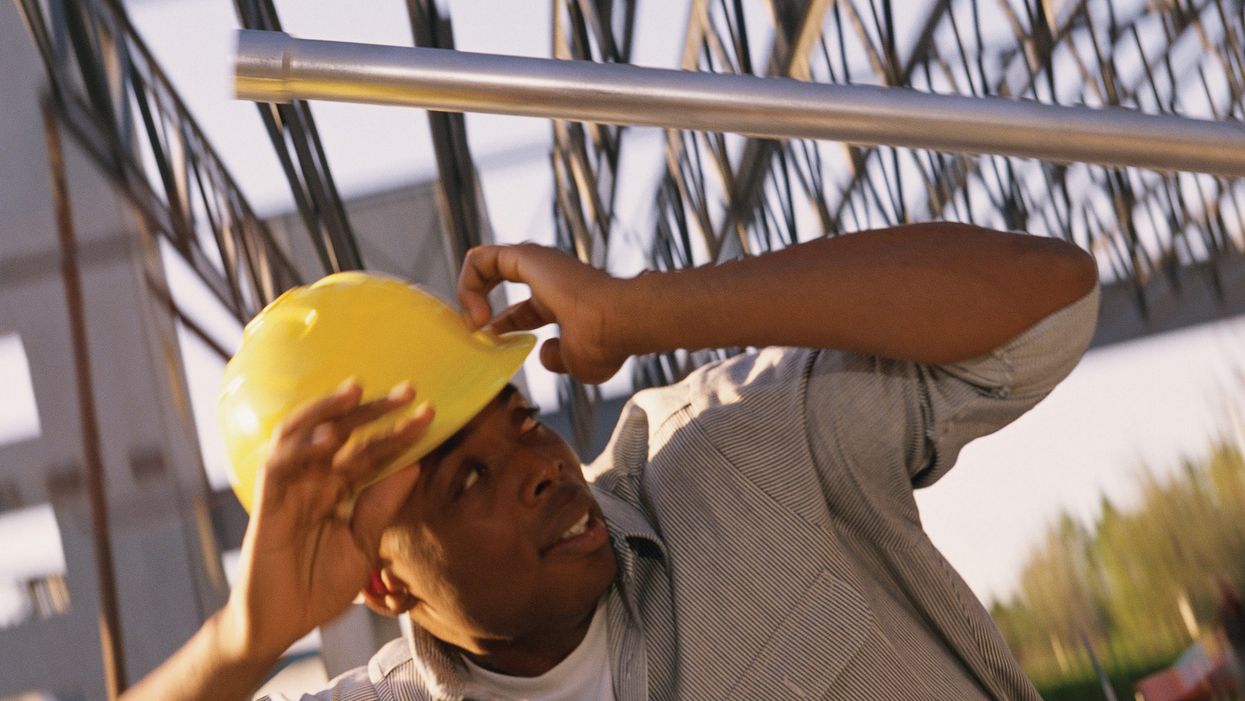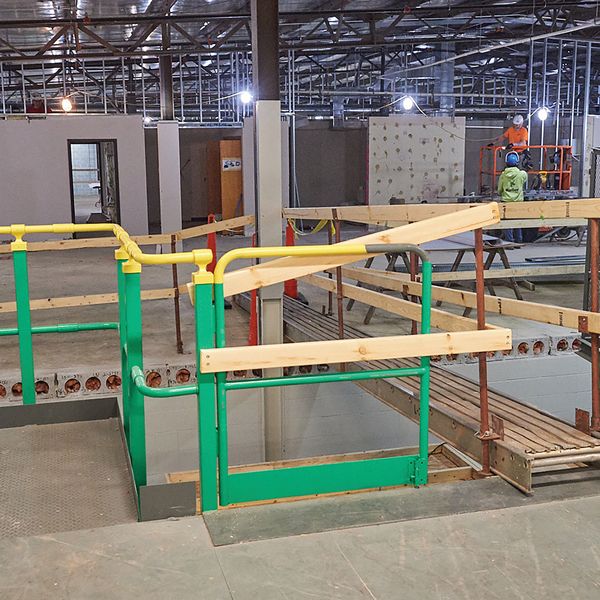Jobsite controls for falling objects
Wearing a hard hat doesn’t protect your workers from every kind of falling object like particulates, tools, or building materials. The risk of severe or fatal injury is why controls are necessary to prevent things from falling onto workers. Project management should consider using the following protections:
- Guardrails,
- Restricted fall zones,
- Overhead protection and barriers,
- Safe work procedures for storing and stacking materials, and
- Housekeeping procedures.
If these five best practices can be used on your jobsite, your workers’ exposure to falling objects can be significantly reduced.
Guardrails
Guardrails are commonly used on stairways and scaffolding. OSHA’s requirements are designed to keep workers from falling from open sides or edges. Workers need to take additional steps to ensure objects, tools, and materials aren’t dropped below. Install toe board along every guard rail so items can’t be accidentally kicked off the walking-working surface.
At some of my past jobsites, we’d install safety fencing (commonly called snow fencing) over the guardrails to prevent things from falling through it. The fencing works well as long as the items aren’t small enough to fit through the mesh’s openings, usually about 2 inches X 2 inches. A better option is to use debris netting because the mesh’s holes are only about ¼ inch X ¼ inch.
Restricted fall zone
Establish a designated fall zone. Anticipate where a dropped object might fall. During overhead work, barricade the area below the workers so nobody enters the drop zone. Barricade enough space to account for items ricocheting upon impacting the ground. Use a hard barricade or a soft barricade like danger tape, depending on your situation. Avoid using barriers that give workers an option to enter the area after identifying hazards, like caution tape.
Overhead protection and barriers
Overhead protection and barriers include debris netting that’s horizontally suspended below the overhead work area. If anything is dropped, it will fall into the net and not onto workers below. But remember to calculate the clearance needed for the netting to expand downwards as something falls into it. Inspect the net for damage daily and remove any items that may fall into it during the shift. Besides using guardrails, other barriers can include roof and floor coverings.
If workers are using break shacks in the structure or near overhead work, consider covering the roof and floor with plywood, metal sheeting, or other protections to prevent a dropped object from piercing the ceiling or falling through the floor to the level below.
Safe work procedures
Develop safe working procedures for each type of work activity that’s performed on your jobsite. Identify activities where workers are at risk for dropping items or have exposure to an overhead falling object. Your jobsite might call these standard operating procedures (SOPs). SOPs are an excellent way to categorize work procedures into step-by-step guidance for workers to follow. Include each of the controls discussed here and how your workers can implement them.
Housekeeping
If your jobsite has housekeeping issues and tools, materials, or other objects aren’t appropriately stowed, the chances of having a dropped object incident at your jobsite are high. Tell workers that housekeeping is mandatory and must be performed throughout the shift. Spend the last 20 minutes of every work shift performing housekeeping duties. Nobody should get a waiver from performing housekeeping duties. It must be a top-down activity.


















































